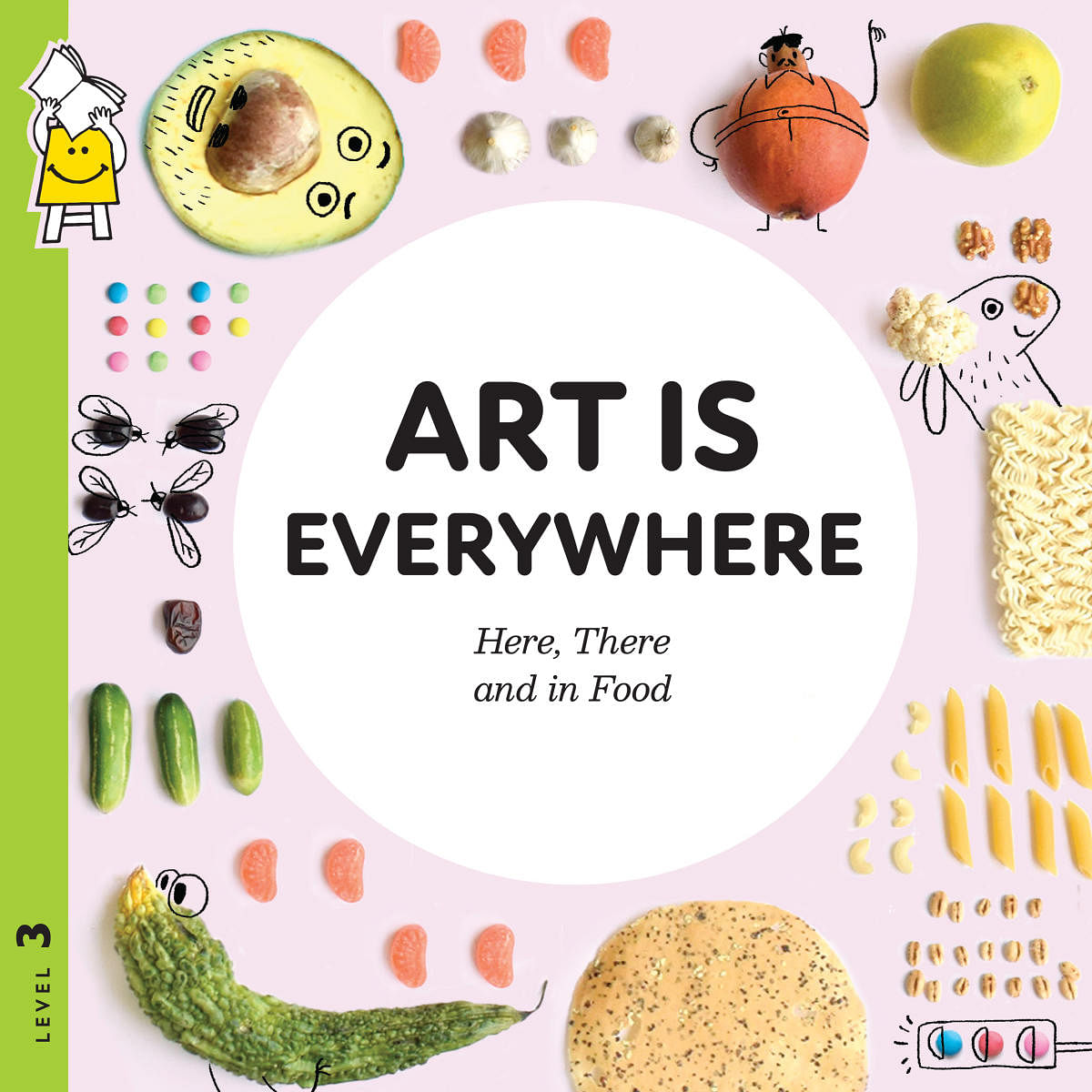
If you are looking for fun-filled art projects to keep children engaged and away from electronic devices, check out the three-book set called Art is Everywhere from Pratham Books. Pratham is a not-for-profit organisation that publishes low-cost books in multiple Indian languages to promote reading among children of all ages in urban and rural areas.
The books were created through a collaborative process in a workshop-like setting. Professionals with a variety of skills and talents got together to envision them, and bring them to life. Aparna Kapur and Bijal Vaccharajani wrote all the text. Priya Kuriyan, Adrija Ghosh, Canato Jimo and Sheena Deviah worked on the illustrations. Radha Rangarajan was in charge of photographs. Aashti Mudnani came on board as the guest editor for the series.
Apart from Jimo who travelled from Delhi, everyone else lives in Bengaluru. Vachharajani says, “We spent two days at my house with lots of food! It was quite fascinating to watch.” After Priya, the art director, outlined her “intent and process” to make sure that everyone was on the same page, the illustrators “took over the living room and began creating magic”.
The photographer took photographs on her camera and cellphone, and then passed these on to the writers, who were seated in Vachharajani’s book room. She says, “We sat and rhymed right there and then, after marvelling at the work.” The execution took place smoothly because everyone had been given some homework to do beforehand, which simply meant “pooling together objects”. Vachharajani’s dining table was used to lay them out.
A light touch
In the book Art is Everywhere: Here, There and in Food, pods of star anise are beautifully arranged to create a tree. Cauliflower florets turn into fluffy clouds. Bulbs of garlic are fashioned into swans. In the book Art is Everywhere: Here, There and in Trash, bubble wrap is rolled up to create a sheep. Pencil shavings are transformed into lions. Pistachio shells become birds on a wire. In the book Art is Everywhere: Here, There and in Everyday Objects, old locks turn into elephants while a key is repurposed into an ukulele.
The rhyming verse is silly, humourous and irreverent. It is meant to help readers enjoy some light-hearted moments, and discover their own creativity with easily available materials. One of the poems is about “an ice-cream lake/with a biscuit boat”. Others are about dodos splashing in a puddle, singing ducks, a farting lion, and a rude kiwi. These books are not preachy, but they do subtly encourage their readers to reduce, reuse, and recycle.
Some of the poems also have characters, which children can develop further into stories of their own. In these books you will meet a woman named Miss Siranha who goes looking for a piranha, Iggy the iguana who thinks that she is a balloon and hopes to reach the moon, the bird Akloo who is a detective, and a woman named Tai whose umbrella refuses to open.
Spontaneous poetry
Kapur loved being part of the immersive project, but found it challenging to lose her inhibitions about writing. She says, “While I am capable of infinite tomfoolery in real life, I am a slow writer, constantly wondering if my joke has landed well. Here, since there was no time for all that, Bijal and I just ended up writing to amuse ourselves and to crack each other up.”
The idea of text drawing inspiration from images reminded Kapur of Margaret Wise Brown, the American author, who wrote in response to Hungarian photographer Camilla Koffler aka Ylla’s photographs in the book They All Saw It (1944). Kapur was not trying to mimic any of her favourite poets but she “did have in mind the very particular charm of (American author) Ruth Krauss’s books with their vignette-y text.”
Kuriyan describes the process of working on this book as “unpredictable, spontaneous and a whole lot of fun.” She says, “We were mostly thinking on our feet and coming up with ideas on the spot and often riffing off each other.” Unlike other projects, where illustrators are given a finished piece of text to work with, here the poems were written in response to the images. “It gave us a lot of freedom to let our imagination run wild,” she adds.